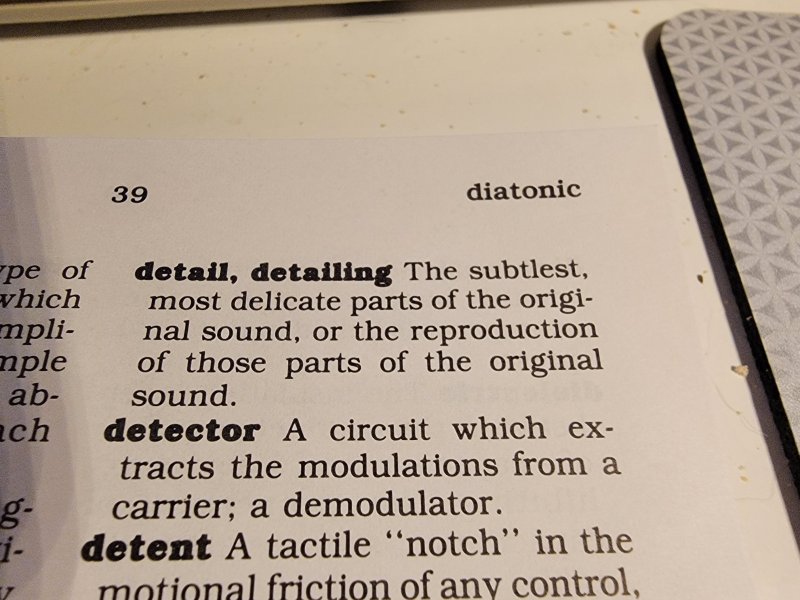I Believe most music lovers appreciate a piece of music not because how well it ‘image’ nor how much ‘detail’ is present but perhaps focus more on how coherent is the music or how deeply nuance of the performance.
You prefer nuance over detail. Yet how can you have nuance without detail?
The micro-detail of bowing in a string quartet, or in the playing of solo violin or solo cello, for example, is essential to the expression of the musicians, to the nuance of their playing. It also allows for hearing subtle shifts in tone. If you don't hear that detail, nuance is lost. Same for the touch of a pianist on the piano. You need to hear all of its detail in order to appreciate the nuance.
I have found that the more a system presents detail properly, the better the musicians appear to be who are playing the music -- their expression becomes much more nuanced and thus richer.
Or take separation of instruments in complex orchestral music. If you hear all the detail of all the little voices and timbres in the overarching polyphony of musical strands and sounds, the music becomes much richer and more nuanced. Why do you think the composer made the effort to weave this intricate web of subtle inner voices, all this detail, in the first place?
Of course, detail is not all the nuance there is. Micro-dynamic expression, the subtle volume shifts from one note or chord to another, plays an absolutely integral part in the players' nuance as well. But detail is all-important too.
Detail and imaging are important in music reproduction. But they can be over emphasised in ‘audiophile listening‘. This thread I believe prompt a wider discussion into the question of how and what we can be listening for.
Of course detail can be overemphasized. That typically happens when tonal balance is unnaturally tipped towards upper midrange and treble. That's why I mentioned above "presenting detail properly". As I said in an earlier post, the trick for a system is to present all the detail under a full, rich tonal balance (unless a tonal balance is naturally thin, which can also happen in certain live acoustics -- yet this is not the typical case).
Detail needs to be woven into the proper tonal texture, and into a proper presentation of musical flow. Otherwise it can indeed stand out unnaturally. But proper detail is *not* the enemy of music or a distraction from it. On the contrary, it is essential to conveying the nuance of musical composition and expression.







